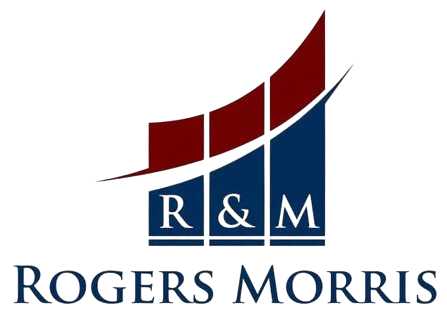Elevating Board Decision-Making
The trajectory of every listed company rests heavily on the quality of the decisions made by its directors. It is therefore incumbent on them in the fulfillment of their fiduciary duty to improve their decision-making, no matter how good it currently is. As Chair, you would understand the weight of this responsibility more than most.
Continual improvement is crucial
While many board members are seasoned, successful professionals, experience alone is not sufficient to guarantee superior decision-making, nor are good intentions. Top-performing companies are led by boards who understand that continual improvement in decision-making is a necessity. They continually refine their thinking, challenge assumptions, and broaden their decision-making toolkit. Top performers in every discipline share this mindset. They recognise that without improvement they won’t get to the top and without continual improvement they will fall behind – and that is because their competitors are improving.
Small improvements to big results
Elite performers whether in sport or business recognise that that even the best can improve, and that small improvements can be exponential. A small competitive advantage can, for example, be sufficient to win a multi-million, even a multi-billion, dollar tender.
Good is not good enough
Elite performers share another common mindset: they are never satisfied with simply being good. They strive to be the best and understand that to get to the top and remain at the top requires constant refinement of their skills, mindset, and methods.
Overcoming complacency
The danger for many good companies is complacency. They accept “good” as being sufficient. With that attitude they will not become top-performers, and top-performers who don’t continually strive for improvement will soon be knocked off their pedestals. History is replete with companies that were once “good,” even great, but later faltered—not because they were incapable, but because they stopped striving for better. In the business arena, as well as in others, those that stagnate are left behind – because their competitors will be striving to improve and get to the top. Complacency is a significant threat to long-term success and so needs to be identified and rooted out.
Common Thinking, Common Outcomes
Another challenge is to overcome homogeneity of thought. Boards are often comprised of similar people to those of their competitors and draw from similar pools of experience. They also often solicit advice from the same kinds of advisory people, value the same types of opinions, and frame problems in the same way as their competitors. The likely result of which are similar decisions, leading to similar outcomes. This is counterproductive to outperformance. One can lead a pack, be in the pack or follow the pack. As Chair, that decision is yours to make. It goes without saying that a company won’t outperform by being in the pack doing what everyone else is doing, or by following the pack doing what others did. To outperform, a board must lead the pack and that requires it to take a different approach to those in the pack. This includes soliciting improvement suggestions from different quarters, from parties that may not be front of mind for the boards of competitor companies.
Different perspectives
In their quest to make wise decisions in the best interests of shareholders and other stakeholders, the boards of outperforming companies seek different perspectives – including those often overlooked. For instance, when engineers are presented with a problem, they typically approach and solve it from an engineering perspective. Financial analysts, on the other hand, are likely to interpret it through the lens of linear models. Meanwhile, a group of artists might view the problem in an entirely different light, leading them to propose a radically different kind of solution. Having the benefit of different perspectives far better equips a board to make wise decisions.
Human behaviour
Many business problems are rooted in human behaviour, which – according to behavioural scientists – is predictably irrational. Human behaviour is neither machine-like nor governed by the linear relationships typically reflected in financial models and sensitivity analysis. Recognising this fundamental truth allows boards to better understand how people are likely to respond to a situation. That insight significantly enhances the board’s ability to make sound, well-informed decisions.
A Program Tailored for Excellence
R&M is offering a program covering a wide range of relevant topics to help boards by equipping them with tools and insights to approach challenges from multiple perspectives—including those often overlooked.
Respecting Experience, Enhancing Capability
The program is not a remedial one, nor does it suggest that boards are failing, and nor does it question the intelligence or wisdom of board members. Rather, it’s about recognising that even the best can improve, that small improvements can be exponential, and that the best decision may necessitate a change in perspective. It also offers insights that many board members would not typically encounter during their usual careers.
Who will benefit from it
This program is for boards who believe that being “good” isn’t enough, and who are committed to transitioning their companies to ‘great’ and staying there. If that reflects you, as the Chair, consider enrolling your fellow board members. Those taking seriously their role on the board should welcome the opportunity to sharpen their thinking and broaden their approach – with a view to continually improving their decision-making and becoming even more effective in fulfilling their fiduciary duty.
Good Value-for-Money
The cost of the program is likely to be only a fraction of what a top-tier professional services firm would charge for a similar scope of work, and only a fraction of the potential benefit. In a competitive marketplace where every edge matters and even minor advantages can have a profound effect on profitability and returns on capital, this may be one of the most valuable investments your board can make.
A Final Thought
Chairing a board comes with immense responsibility, so ensuring your directors have access to the best tools, thinking, and perspectives isn’t just prudent; it’s essential. If you agree with that and believe your board can make better decisions, this program could be ‘manna from heaven’ for you.
Discovering more / Schedule an exploratory discussion
Further information on the program is set out on ‘The Program’ page [insert link], as is a list of the modules covered [insert link]. To explore how it can help, please email enquiries@rogersmorris.com.au in that regard.













